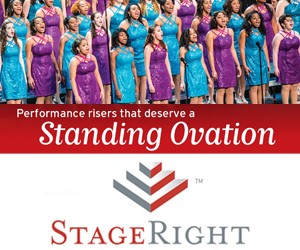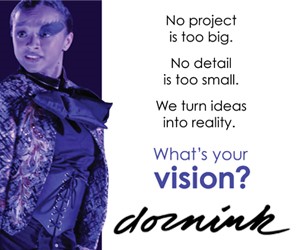
In light of the recent unfortunate and totally preventable orchestra pit cover collapse in Anaheim, injuring dozens of teenage girls performing at a high school, safety considerations are coming to the forefront.
There are more aspects to a Show Choir performance than just the “Song and Dance.” Competition hosts, music directors, stage crew and performers should all have the following safety checklist:
No DIY Staging or Homemade Construction:
General condition of the stage floor.
- Is the surface level with no trip hazards?
- Is the front apron edge easily seen?
- How good is the lighting from the wings to enter the stage area?
- Is there an orchestra pit cover or stage extension and how is it constructed? Homemade is good for grandma’s cookies but here is not the place for homemade or DIY construction. Many well-meaning booster groups have tried to help the program, saving the school money by constructing their own stage equipment. When it comes to surfaces that the students are performing on, all portable staging should be designed by a reputable manufacturer or structural engineer.
No Wobbling, Creaking Risers:
All the movement with a Show Choir’s choreography increases the load or thrust on the supporting riser framework, thus bracing between the riser legs must be present, and better designed risers will have that bracing. Such engineering eliminates wobbling, creaking or worse, collapse.
- The decks should be dual sided with a sound reduction center core per fiber honeycomb material, which eliminates the foot sound “drum head” effect and possible bowing.
- There should be a means of unifying both the decks and the supports providing greater structural integrity. Manufacturer supplied Unit-to-Unit straps secure the legs of one support to an adjacent one. Some manufacturers supply clips to lock neighboring decks together for added strength. With these safety items in use, separation between units becomes impossible, even with the liveliest dance routine.
- Risers must support a minimum of 125 pounds per square foot, the staging industry standard.
- Surface should be smooth enough to dance on, yet durable and slip resistant.
- A slightly textured polypropylene surface is recommended. Performing in stiletto heels or tap shoes requires a non-slip surface.
- Adjustable leveling devices ensure risers don’t wobble, critical to dancers.
- Smooth rounded deck corners, minus sharp metallic edges, avoids torn nylons, scraped shins, and/or damaged expensive costumes.
Trusssing for Lighting, Mics, and Scenery:
- Trusses erected for lighting, microphones, or scenery must be properly secured with recommended anchoring devices, e.g. guide wires, etc. For instance, in some recent news reports, stories of a “stage collapse” were actually a failure of rigging falling onto a stage rather than actual stage crumpling, and equally dangerous. No Show Choir wants negative publicity.
- Add equipment to the rigging from the outside in while factoring in proper weight distribution. All equipment mounted on the trusses must have safety wire retention in the event of loosening, thus ensuring equipment will not fall on the stage or performers.
Wiring and Taping:
Lighting, monitors, microphones and other electrical equipment should have cables secured with gaff tape eliminating trip hazards.
Duct tape leaves a sticky residue and is therefore not recommended.
Lighting and Visual Impairment:
Strobes and other dynamic lighting effects can dramatically add to the performance-yet can distract or visually impair a performer, thereby creating a hazard for missteps or falls.
Consider these possibilities while setting/adjusting lighting instruments.
Watch for Trip Hazards with Costuming:
- Costumes are often of a style performers are not normally comfortable in, particularly long flowing gowns and high-heeled shoes. Multiple dress rehearsals help the performers feel at ease wearing expensive and often fragile costuming.
- When designing or choosing costumes, examine for possible trip hazards.
- Costumes should be inspected prior to every performance for loose hems, seams, or trim.
- Big brimmed floppy hats affect possible vision obstruction. When a dancer is worried about a head piece falling etc., concentration about where their feet are supposed to be is distracted.
Get Performers Comfortable with the Props:
As with costumes, the choirs need rehearsals with props until comfortable using them.
Canes, parasols, etc., can trip up performers, amateur or professional, and should be used with care and practice until feeling familiar.
Beware of Liability Issues with Special Effects:
Fog, bubble machines, confetti, and other special effects are used with Show Choir performances. As with lighting effects, these special effect components can be very dramatic and effective, but they can also pose a safety hazard.
Excessive moisture on stage introduces slip hazards. Condensate collection pans under special effects generators greatly reduce stage moisture and related slippery surfaces. Pyrotechnics must be avoided as they are in violation of Fire Code regulations, considered illegal, and result in prosecutorial litigation should there be any material damage or personal injury.
No one wants to be a “Nervous Nellie” constantly worrying about worst-case scenarios, but with regard to student performers, safety considerations cannot be overlooked, nor can related liability issues. So, polish up those dance steps, and fine tune the music while being mindful of little things; if overlooked, they could literally trip up an otherwise perfect performance.











